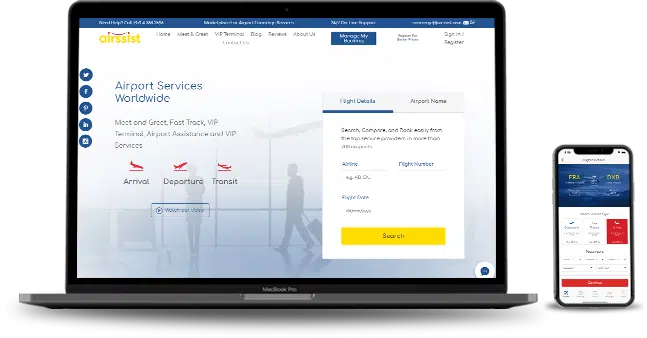Table of Contents
Welcome to the Comprehensive Guide to Corporate & Financial Road Shows! In this all-inclusive resource, we’ll take you on a deep dive into the world of roadshows, offering you invaluable insights and practical advice to master this essential aspect of corporate finance. Whether you’re an experienced executive looking to refine your roadshow strategy or a newcomer eager to understand the ropes, this guide has got you covered. Get ready to unlock the secrets to successful roadshow planning, investor engagement, and maximizing your financial potential. Let’s embark on this journey together and make your next roadshow a resounding success!
Definition of a Financial RoadShow
A Financial RoadShow, often referred to as a Corporate Financial RoadShow, is a strategic and organized series of presentations and meetings conducted by a company’s management team, typically including top executives, such as the CEO, CFO, and investor relations professionals. The primary objective of a Financial RoadShow is to communicate the company’s financial performance, growth prospects, and investment opportunities to a targeted audience of investors, analysts, fund managers, and other key stakeholders. This road show typically takes place over a specified period and involves visits to major financial centers or cities, where the company aims to engage with potential and existing investors.
Purpose of a Corporate Financial RoadShow
- Attracting Investors: The primary purpose of a Financial RoadShow is to attract new investors and maintain relationships with existing ones. By presenting the company’s financial health, growth strategies, and future prospects, management seeks to generate interest and confidence among potential investors.
- Enhancing Stock Market Visibility: Companies often conduct road shows before or after significant corporate events, such as an initial public offering (IPO), secondary offerings, or major acquisitions. These presentations aim to boost the company’s visibility in the stock market and ensure that it is on the radar of institutional investors and analysts.
- Gaining Analyst Coverage: Engaging with financial analysts during a road show can lead to increased analyst coverage. This coverage is crucial as it can improve market sentiment, increase research reports, and provide valuable insights for both current and prospective investors.
- Price Support: For public companies, a well-executed road show can help support the stock price. By showcasing the company’s financial strength and growth potential, it can reassure existing shareholders and stabilize the stock in times of market volatility.
- Educating Stakeholders: A road show offers an opportunity to educate various stakeholders, including investors, analysts, and the media, about the company’s business model, industry dynamics, competitive advantages, and risk factors. This helps stakeholders make informed investment decisions.
A Financial RoadShow is a vital component of a company’s investor relations strategy. It serves to educate, engage, and build trust with the investment community, ultimately contributing to the company’s financial success and market standing.
Types of Corporate Roadshows
Corporate roadshows are versatile communication and marketing tools used by companies to engage with various stakeholders. These road shows are tailored to specific purposes, audiences, and events. Here are five common types of corporate roadshows:
Investor RoadShows
Purpose: Investor roadshows are conducted to attract and retain investors, both institutional and retail, by showcasing the company’s financial performance, growth prospects, and strategic plans.
Audience: Institutional investors, fund managers, analysts, retail investors, and other financial stakeholders.
Key Activities: Company executives, including the CEO and CFO, meet with investors to present the company’s financial results, business strategy, and answer questions. These road shows are often held annually or quarterly.
Product Launch Road Shows
Purpose: Product launch road shows are designed to introduce new products or services to the market, create buzz, and generate interest among potential customers and partners.
Audience: Customers, distributors, partners, industry experts, and the media.
Key Activities: The financial roadshow involves a series of events, demonstrations, and presentations in key markets or cities. It aims to educate the audience about the product’s features, benefits, and applications.
IPO Roadshows
Purpose: IPO roadshows are a critical part of the process when a company goes public. They are conducted to attract investors and set the stage for a successful initial public offering.
Audience: Institutional investors, analysts, underwriters, and potential retail investors.
Key Activities: Company executives travel to major financial centers to present the company’s financials, growth strategy, and industry positioning. These presentations are instrumental in determining the IPO price and demand for shares.
M&A Road Shows
Purpose: M&A (Merger and Acquisition) road shows are conducted to communicate the benefits and rationale behind a proposed merger or acquisition to shareholders and key stakeholders.
Audience: Shareholders of the acquiring and target companies, regulatory authorities, and investment bankers.
Key Activities: Executives from the acquiring and target companies present the strategic advantages, synergies, and financial implications of the deal. These road shows can also help address concerns and gain approval from shareholders.
Industry Conference Road Show
Purpose: Industry conference road shows involve participation in industry-specific conferences and events to network, share expertise, and position the company as a thought leader within its sector.
Audience: Peers, industry professionals, potential partners, and customers.
Key Activities: The company may participate in panel discussions, deliver keynote speeches, or set up exhibition booths at relevant conferences. These road shows aim to foster industry relationships and promote the company’s brand within its sector.
In summary, a financial roadshow can come in various forms, each tailored to a specific purpose and audience. Whether it’s attracting investors, launching products, going public, facilitating mergers, or establishing industry presence, these road shows play a crucial role in achieving corporate objectives and fostering engagement with key stakeholders.
Parties Involved and Interested in Corporate Road Shows
Imagine a financial roadshow as a captivating theater performance where the spotlight shines on the stage, and the audience is an eclectic mix of avid spectators and critical reviewers. The cast and characters in this theater of finance are:
Key Players
- Company Executives – The Stars: These are the true celebrities of the show, the visionaries and strategists who steer the corporate ship. CEOs, CFOs, and other top brass take center stage to eloquently narrate the company’s story, its highs, and its exciting future.
- Investment Bankers – The Directors: Behind every successful show, there’s a meticulous director, and in the world of corporate road shows, it’s the investment bankers. They script the performance, ensuring it’s in tune with market trends, investor expectations, and financial regulations.
- Legal Advisors – The Scriptwriters: Legal advisors are the unsung heroes, crafting the fine print of the script. They ensure that every word spoken aligns with regulations, and they stand ready with their legal umbrellas if the weather turns stormy.
- Public Relations Teams – The Set Designers: These talented individuals create the backdrop against which the performance unfolds. They manage the company’s image, ensuring it’s pristine and appealing to the audience.
Interested Parties
- Institutional Investors – The Heavy Hitters: Think of institutional investors as the front-row audience, the ones with the best seats in the house. They scrutinize every word and number, deciding whether to buy into the story or not.
- Retail Investors – The Enthusiasts: Retail investors, the ones who buy a ticket for every show, represent a diverse group of individual investors. They listen attentively, looking for opportunities to join the performance.
- Analysts and Media – The Critics and Publicists: The analysts play the role of critics, dissecting every detail, and offering their reviews. The media are the journalists covering the event, conveying the narrative to a wider audience, and amplifying the buzz.
- Regulatory Bodies – The Watchful Guardians: Like theater ushers ensuring everyone follows the rules, regulatory bodies oversee the proceedings, making sure the performance adheres to financial regulations.
- Competitors – The Backstage Intriguers: Competitors, lurking in the shadows, watch with a keen eye, sometimes eager to uncover secrets or plot twists that could benefit their own performances.
In this grand theater of financial roadshow scenario, the key players and interested parties come together to create a spectacle of finance. The success of the show hinges on the synergy between these diverse characters, each playing their unique role to captivate, inform, and influence the audience, all while adhering to the strict rules of this financial drama. The drama unfolds, applause ensues, and the show goes on, with each act offering a new twist in the ever-evolving world of corporate finance.
How the Road Show Scenario Works
A successful financial roadshow is akin to a well-orchestrated symphony, where every note, instrument, and performer plays a crucial role in achieving harmony. Here’s a breakdown of the road show scenario:
Pre-Road Show Preparation
- Defining Objectives: The journey begins with the company’s leadership team meticulously defining the road show’s objectives. Are they seeking to attract new investors, launch a product, or announce a merger? These objectives serve as the guiding star for the entire road show.
- Selecting Locations: Much like selecting venues for a concert tour, choosing the right locations for road show events is essential. Locations are picked based on the target audience’s presence, such as major financial hubs or strategic markets.
- Developing Presentation Materials: Just as musicians practice their scores, the company’s management team, PR, and legal advisors work together to craft the presentation materials. These materials include financial reports, investor presentations, and legal disclosures that must be accurate and captivating.
airssist’s Role in Road Shows – How airssist Plays a Role in the Corporate Travel Industry
- Introduction to airssist: airssist plays a leading role in the corporate travel industry, specializing in providing premium travel services to corporate clients and executives. With a global presence and a commitment to exceptional service, airssist ensures that executives’ travel experiences are seamless and stress-free.
- Services Offered: airssist offers a range of services tailored to the unique needs of financial roadshows. These services encompass everything from handling flight bookings and airport transfers in luxurious limousine transfers, ensuring that executives can focus on their roadshow presentations while airssist takes care of their travel needs, be it private cars for individuals or efficient airport limo transfers for large groups.
- Benefits of Partnering with airssist: Partnering with us in the corporate travel industry brings numerous advantages. These include enhanced efficiency and productivity, as executives can delegate the complexities of travel logistics to experts. airssist’s global network and experience also mean executives can navigate unfamiliar territories with ease, minimizing travel-related stress and delays.
On-Road Show Execution
- Meeting Schedules: The financial roadshow kicks off, and schedules are meticulously managed. Time is of the essence, as each meeting, presentation, or pitch must adhere to the set timeline.
- Presentations and Pitches: The company executives take the stage, delivering compelling presentations and pitches. These are carefully crafted to align with the road show’s objectives, engaging the audience and conveying the company’s value proposition effectively.
- Q&A Sessions: A crucial part of the road show, Q&A sessions allow the audience to interact with the executives, seeking clarifications and insights. These sessions require quick thinking and articulate responses to address investor concerns.
Post-Road Show Follow-Up
- Analyzing Feedback: Post-road show, the company analyzes feedback from investors, analysts, and stakeholders. This feedback helps refine future road show strategies and messaging.
- Investor Engagement: Engaging with interested investors and nurturing relationships is an ongoing process. This involves addressing follow-up inquiries, providing additional information, and maintaining open lines of communication.
- Reporting and Documentation: Comprehensive reporting and documentation are essential for compliance and transparency. Legal and financial teams ensure that all road show activities are well-documented and adhere to regulatory requirements.
In essence, the road show scenario is a meticulously choreographed performance, where each stage and player contributes to the company’s success in achieving its objectives. Joining with industry leaders like airssist in the corporate travel industry can help streamline travel logistics, ensuring that executives are primed to deliver their best performances on the road.
Tips for a Successful Corporate Financial RoadShow
- Clear and Compelling Storytelling: Craft a narrative that not only presents financial data but also tells a compelling story about the company’s past successes and future potential.
- Targeted Audience Engagement: Tailor your message to the specific interests and needs of your audience, whether they are institutional investors, retail investors, or analysts.
- Effective Use of Technology: Utilize technology to enhance presentations, offer virtual access, and facilitate Q&A sessions, making it easier for remote investors to participate.
- Addressing Investor Concerns: Be prepared to address investor questions and concerns with transparency and confidence, showcasing your knowledge and commitment to addressing potential risks.
- Monitoring and Adjusting Strategy: Continuously monitor feedback and market dynamics during the road show and be ready to adapt your strategy to ensure it remains effective and relevant.
The Timeless Significance of Corporate Financial RoadShows
Corporate financial roadshows remain a vital tool for fostering trust, transparency, and engagement in the world of finance. They offer a platform for clear storytelling, targeted audience engagement, and the use of technology to communicate a company’s value proposition effectively. As the financial landscape evolves, road shows continue to play a crucial role in communicating with investors, navigating complex financial events, and building lasting relationships. In this journey, airssist’s role in facilitating promising travel and logistics ensures that executives can focus on their presentations and engagement, highlighting the enduring importance of direct interaction in the digital age.
Note: Please note that the information on this page is generic & subject to change due to fluctuations in airport services. Kindly confirm service availability with our team, as offerings may vary daily.
 French | Français
French | Français Spanish | Espana
Spanish | Espana German | Deutch
German | Deutch Arabic | العربية
Arabic | العربية Chinese | 中文(简体)
Chinese | 中文(简体)  Japanese | 日本語
Japanese | 日本語 




